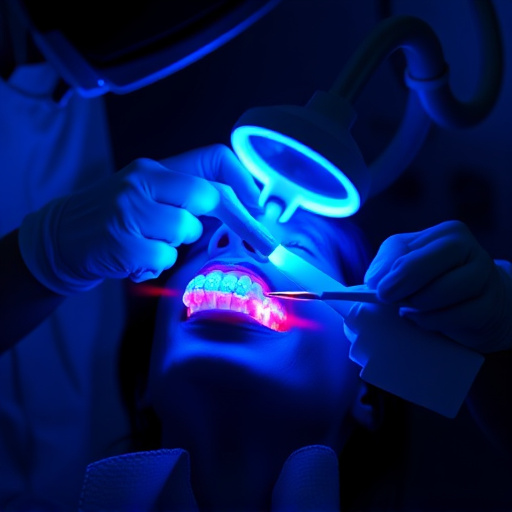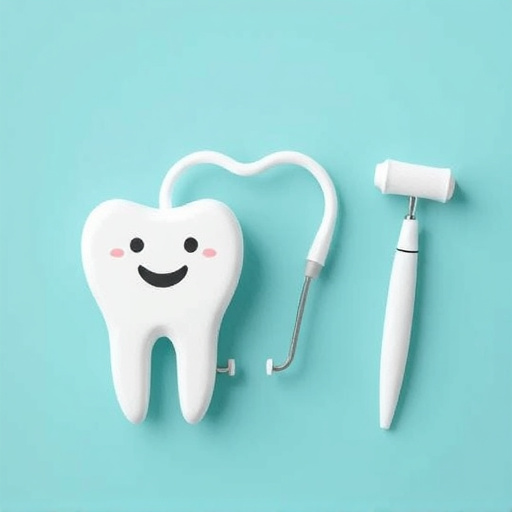Persistent tooth pain radiating to jaw areas may signal the need for tooth extraction services. Regular dental check-ups help identify issues early, with treatments like fillings or root canals saving teeth when possible. Extractions are commonly needed for wisdom teeth removal, cosmetic dentistry, and dental trauma, emphasizing their importance in maintaining oral health and preventing future complex procedures.
Are you experiencing persistent pain or discomfort in one of your teeth? It might be time to consider tooth extraction services. This article delves into the signs that indicate a potential need for dental intervention, highlighting painful symptoms and common scenarios requiring expert care. Understanding when to seek help can ensure timely treatment and prevent further complications. Recognize the signs, consult a professional, and take control of your oral health with informed decisions regarding tooth extraction services.
- Recognizing Painful Signs Requiring Action
- When To Seek Expert Dental Intervention
- Understanding Common Extraction Needs
Recognizing Painful Signs Requiring Action

If you’ve been experiencing persistent pain or discomfort in one or more teeth, it could be a sign that tooth extraction services are necessary. This is especially true if the pain radiates to your jaw or nearby areas, making everyday activities like eating or even applying pressure difficult. Many people often overlook these painful signs, attributing them to minor issues that will resolve on their own. However, ignoring such symptoms could lead to more severe dental problems down the line.
Regular visits to your general dentistry practitioner can help in identifying potential issues early. If your dentist has already suggested tooth repair or cosmetic dentistry procedures for specific teeth, it’s crucial to take their advice seriously. They have the expertise to determine whether a tooth can be saved through treatment like fillings, crowns, or root canals. But if the damage is extensive and the tooth has little chance of recovery, extraction might be the best course of action to prevent further infection and maintain overall oral health.
When To Seek Expert Dental Intervention

If you’ve been experiencing persistent pain or discomfort in a particular tooth, it could be a sign that it’s beyond simple oral hygiene or a minor issue. In such cases, it’s crucial to seek expert dental intervention for a thorough assessment. Neglecting persistent oral problems can lead to more severe complications, making timely visits to your dentist essential. They have the expertise and tools to diagnose conditions like impacted teeth, infections, or severe decay that might require tooth extraction services.
Remember, not all dental issues are immediately apparent. Some problems may be developing beneath the surface, causing subtle yet significant pain or discomfort. A skilled dentist will use advanced techniques and imaging to identify these hidden issues. Promptly addressing such concerns can prevent more extensive procedures later, including situations where a tooth repair or dental bonding might have been sufficient initially but is no longer viable due to the progression of the condition. In emergency cases, immediate access to emergency dental care ensures swift relief and prevents further deterioration.
Understanding Common Extraction Needs

Tooth extraction services are often needed for various reasons, many of which can be common and easily identifiable. One of the most frequent extractions involves wisdom teeth, or third molars, which often become impacted or poorly positioned within the jaw. This can lead to pain, infection, or damage to adjacent teeth. In such cases, a dentist might recommend wisdom tooth removal as a preventive measure.
Additionally, cosmetic dentistry procedures may include extractions to create space for straightening teeth through orthodontic treatments. Family dentistry practices also frequently handle extractions due to dental trauma, severe decay, or gum disease. These services are crucial in maintaining oral health and ensuring that any issues don’t escalate, potentially saving patients from more complex—and costly—procedures down the line.
If you’re experiencing persistent pain, swelling, or visible damage to a tooth, it might be time to consider tooth extraction services. Regular check-ups with your dentist can help identify issues early on, making extractions less complex. Understanding common needs for tooth extraction, recognizing painful signs, and seeking expert dental intervention when necessary are key steps in maintaining optimal oral health. Don’t delay; consult a professional to discuss your options and find relief from discomfort or potential complications.














